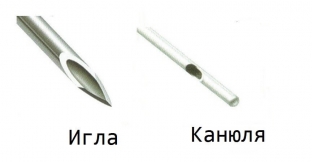Injection techniques for facial correction have conquered the whole world over the past decades. With the advent of the first filler drugs, their popularity grew exponentially, and today it is very difficult to find a modern girl who denies herself such pleasure as correcting her appearance with the help of fillers. In order to make the procedure as safe, comfortable and effective as possible, the methods of introducing fillers have been carefully studied and improved. Today, specialists have a great opportunity to use instead of needles – cannulas for contour plastics. But not all doctors choose them. Today on estet-portal.com read about all the pros and cons of using cannulas for fillers.
Advantages and disadvantages of using cannulas for contouring
Cannulas have been known in aesthetic medicine for quite a long time: for many years they have been used by plastic surgeons for liposuction. In recent years, specialists have begun to use smaller cannulas, the so-called microcannulas, for the introduction of intradermal fillers.
The cannula is a thin, flexible, hollow tube with a blunt tip and a small lateral opening for expelling the filler.
The use of cannulas for contouring has a number of advantages, but they also have some disadvantages. Read about them in detail in this article.
Contour cannulas:
- features of the use of cannulas for contour plastics;
- key benefits of contouring cannulae;
- Disadvantages of using cannulas for contouring.
Peculiarities of the use of cannulas for contouring
Cannula is currently quite often used for the introduction of fillers during facial contouring. With the help of this procedure, it is possible to recreate the missing volumes, thus correcting the imperfections of the face. However, it is erroneous to assume that the use of a cannula completely precludes the use of an injection needle. Since the cannula has a blunt tip, it is impossible to pierce the skin with it, and it is this manipulation that the specialist performs with the help of an injection needle. Only then can he insert the cannula into the resulting hole. Thus, cannulas can be used for correction of nasolabial folds, cheeks, lips, infraorbital region and décolleté.
The main advantages of contouring cannulas
Many specialists today choose cannulas for the introduction of injectable fillers. This is due to their pronounced benefits, which include:
- flexibility – due to this, the cannula can be moved under the skin for the most accurate implantation of filler from a single hole. Thus, when using a contouring cannula, a much smaller number of skin punctures is performed;
- blunt ends – due to this quality, cannulas are much less traumatic for tissues than needles. They do not damage important structures such as nerves or blood vessels, but simply push them aside;
- possibility of use in many areas – since the risk of bruising and swelling is very low when using cannulas, they can be used even in difficult areas such as the infraorbital cavity or the nasal area.

Disadvantages of using contouring cannulas
Despite the pronounced benefits of using cannulas, not all doctors prefer to work with them, and, most often, this concerns lip correction. Some experts believe that the lips are better corrected with needles, since cannulas can lead to the introduction of more uniform and linear doses of fillers, which, as a result, does not give a very good result. Since the cannula has a blunt tip, it cannot be used close to the surface of the skin, nor can it be used to create very fine lines or "strokes" on the surface of the skin.
Cannulas offer significant benefits in many areas, but they are not optimal in all cases.
It is also important to note that not all practitioners use cannulae, also because they require some training and skills. estet-portal.com thanks you for your attention.
See also: "Peculiarities of using cannulas for the introduction of fillers in the cheeks and lips".







Add a comment